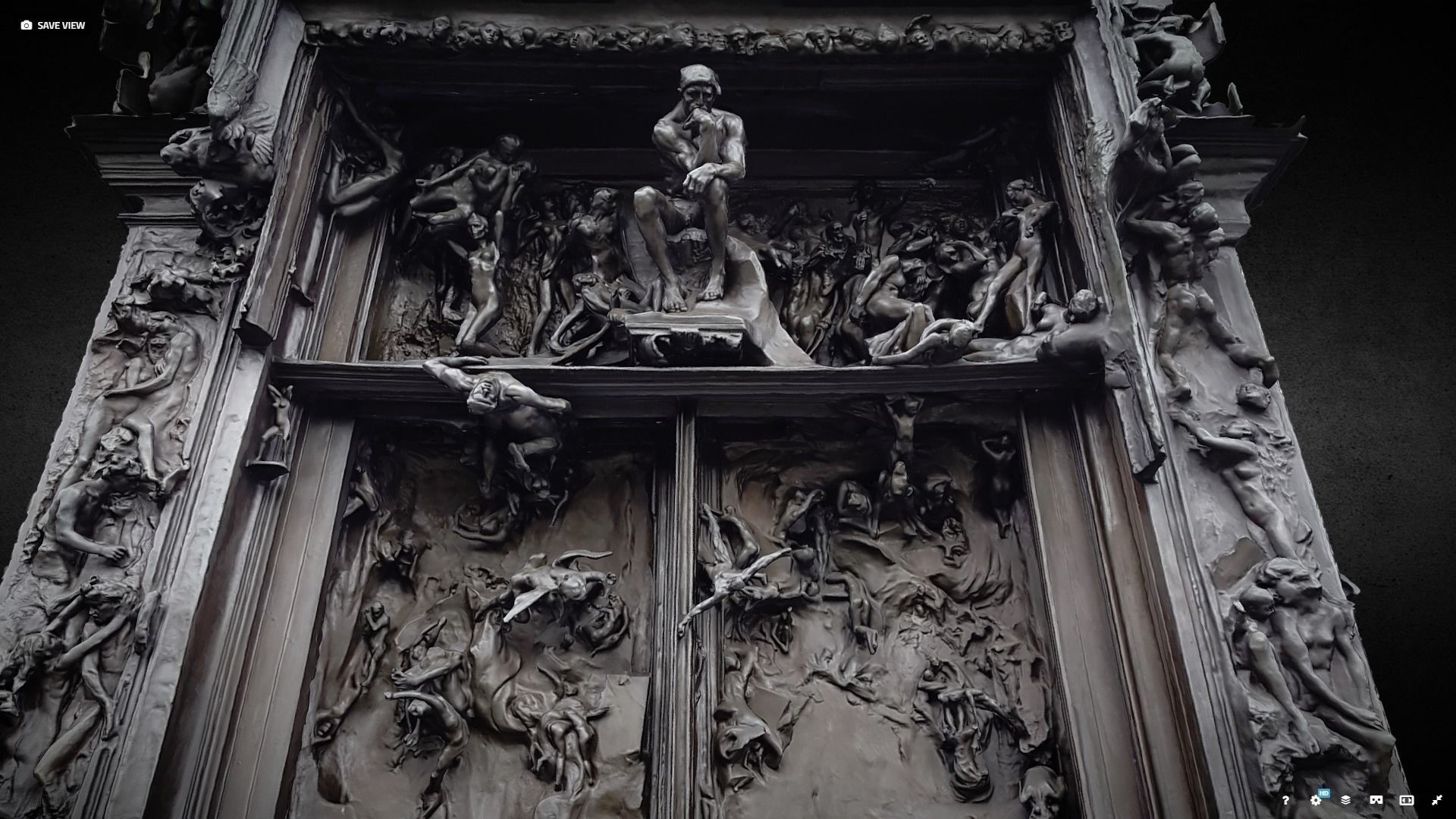Puzzling Makeover of Entrance Building to the Oba’s Chambers in the Palace of the Oba of Benin
Oluwatoyin Adepoju
Augustine Togonu-Bickersteth
--
Listserv moderated by Toyin Falola, University of Texas at Austin
To post to this group, send an email to USAAfric...@googlegroups.com
To subscribe to this group, send an email to USAAfricaDial...@googlegroups.com
Current archives at http://groups.google.com/group/USAAfricaDialogue
Early archives at http://www.utexas.edu/conferences/africa/ads/index.html
---
You received this message because you are subscribed to the Google Groups "USA Africa Dialogue Series" group.
To unsubscribe from this group and stop receiving emails from it, send an email to usaafricadialo...@googlegroups.com.
To view this discussion on the web visit https://groups.google.com/d/msgid/usaafricadialogue/CAGBtzfO7WwA5-QskXsJRSzYxdQVCXC_ABqXVv3zbuHz0AtqQ9Q%40mail.gmail.com.
Cornelius Hamelberg
Dear Oluwatoyin Vincent Adepoju,
“A stitch in time saves nine”
If only you had got wind of the plans that were afoot , you could have forwarded your reservations about the recent renovations and the new features at the Oba’s Royal Palace that are not entirely to your liking and perhaps thereby succeed in influencing the final outcome. Now it seems that your objections or regrets are coming too late in the day - or perhaps you expect the pillars to be pulled down and replaced by more glorious local architectures that reflect Benin Culture or maybe even something more up to date designed by David Adjaye ?
After all the hue and cry and all the bad air created about looted Benin Bronzes, some of which I espied on exhibition at the British Museum during the first week of August this year , all I can say is that it’s a very poignant point that you make here, poignant and distressful although it need not necessarily be the latter, just because you disagree about someone else’s aesthetics, sense of personal self-esteem/ national pride, self-esteem ,prestige. cultural self-esteem, architectural self- esteem
As you are well aware, truth is sometimes stranger than fiction - and here we are surely not talking about “ mistaken identity” - time and place obviously do not permit you to conflate an Old Emperor of Rome, even a reincarnated one, with His current , contemporary Highness, the Oba of Benin.
I’m inclined to believe that every Black and Proud African should be whole-heartedly with you on this one, of course including His Black and Proud Majesty , the Oba of Benin himself , although he might have his own personal reasons or be acting on the advice of his advisers and councillors. It’s possible that the Roman-type architectural pillars are more expressive of the pomp and ceremonial glory befitting a modern, twenty-first century Oba of Benin. Why not? But, if he does not advance any personal reasons, preferences that have determined his choice then I’m afraid that you would have to be in his shoes or to be sitting on his throne as HIM, in order to know exactly what he’s thinking or the thinking behind the decision-making.
BTW, since this is not about looting intellectual property rights or architectural designs of of ancient Greece and Rome I wonder how e.g. Chika Okeke-Agulu would weigh in on this very sensitive issue
In this day and age, all over the world, there are monarchs and even little billionaire princes and princesses who prefer the Bentley to the Rolls Royce - and until Nigeria starts producing that kind of quality car or airbus are you suggesting that Nigerian monarchs should revert to the ceremonial horse and carriage that was the latest thing in 18th century Britain - and of course on special occasions is still very much and proudly too, the order of the day ?
Have you been to one of these, recently ( I love horses)
Some traditional Music:
https://www.youtube.com/watch?v=x2z7AMRqtLM
https://www.youtube.com/watch?v=9suCPWKWwLY
Oluwatoyin Adepoju
Is what is at stake simply an issue of differences in ''aesthetics, sense of personal self-esteem/ national pride, self-esteem ,prestige. cultural self-esteem, architectural self- esteem''?
With all due respect to the Oba of Benin, is what is at stake best localised to ''his own personal reasons [ as he acts] on the advice of his advisers and councillors'' requiring one to ''be in his shoes or to be sitting on his throne as HIM, in order to know exactly what he’s thinking or the thinking behind the decision-making''?
Is such an approach a demonstration of interpersonal senstivity or a trivialisation of a serious issue or something in between? What may be understood as the frame of reference of the activities of the Oba of Benin and the Benin Traditional Council and other advisers the Oba works with?
My view is that the Obaship and the Oba's palace are an embodiment of Benin culture and need to dramatise the creativity of that culture as much as possible.
The Obaship and the palace are venerable institutions shaped by people existing within the progression of time, implying ideally a balance of continuity and change, ideally innovative change. Does the importation of neo-classical architecture as the central building leading to or housing the Oba's chambers, the central building of the palace, demonstrate any innovation, particularly innovation suggesting the creativity achieved in Benin's world famous arts and its distinctive architecture?
%20ed.jpg?part=0.1&view=1)
The New Front Part of the Central Building of the Palace of the Oba of Benin
Benin never had an automobile industry, so one cannot argue for innovation in such an industry, but Benin has an ancient artistic and architectural tradition, one of the greatest in the world. Should the creativity suggested by that achievement not be reflected in the central building of the Oba's palace, the spatial and symbolic centre of Benin culture?
Should the structure be rebuilt? I think so.
Why?
A cultural centre of the level of significance of the palace of the Oba of Benin needs to be constructed in terms of the most enduring values, propjecting the union of the past, the present and the timeless, as demonstrated by the unique insights developed in relation to the culture's creative traditions.
University College, London, for example, has a similar but even more impressive design than the building now constituting the Oba's chambers.
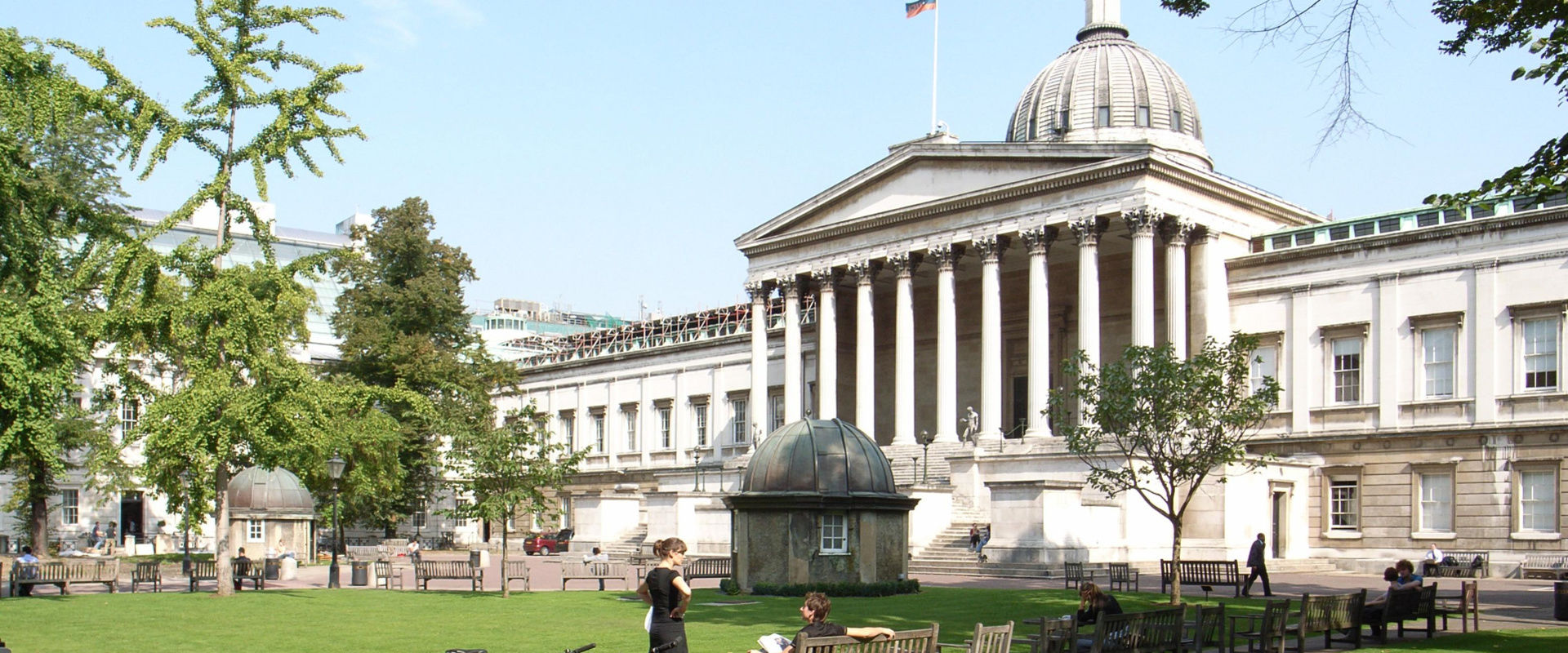
The relevance of that design to UCL, however, is clear, being a Western university with its roots in the headwaters of the Western cognitive tradition in ancient Greece, where that style achieves a particularly iconic representation in the Parthenon.
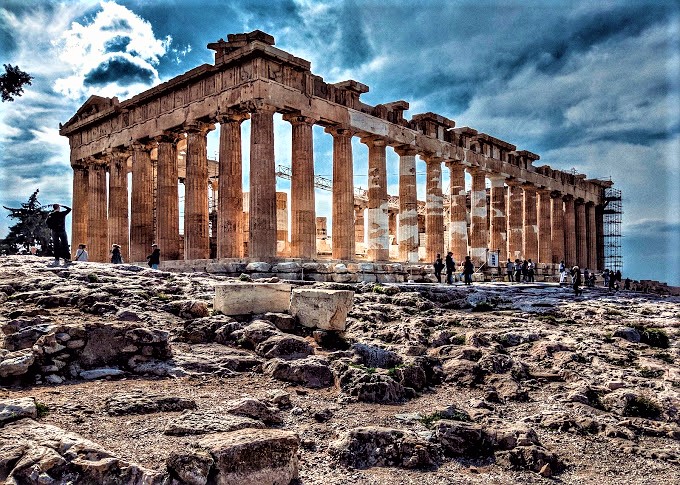
Jakub Pala's picture of the Parthenon, ''a former temple on the Athenian Acropolis, Greece, that was dedicated to the goddess Athena during the fifth century BC. Its decorative sculptures are considered some of the high points of Greek art, an enduring symbol of Ancient Greece, democracy and Western civilization.(Wikipedia)
What is the direct relationship of such cultural linlks to the palace of the Oba of Benin, the symbolic centre of a civilisation with its own cognitive, artistic and architectural history?
As an example of the innovative use of the idea of pillars in African architecture, pillars demonstrating royal grandeur within high creativity, one may see the famous verandah posts of Olowe of Ise for the palace of the Ogoga of Ikere, in which human figures hold up the roof, the stylization of these figures and the spatial relationships between them greating a sense of silent majesty.
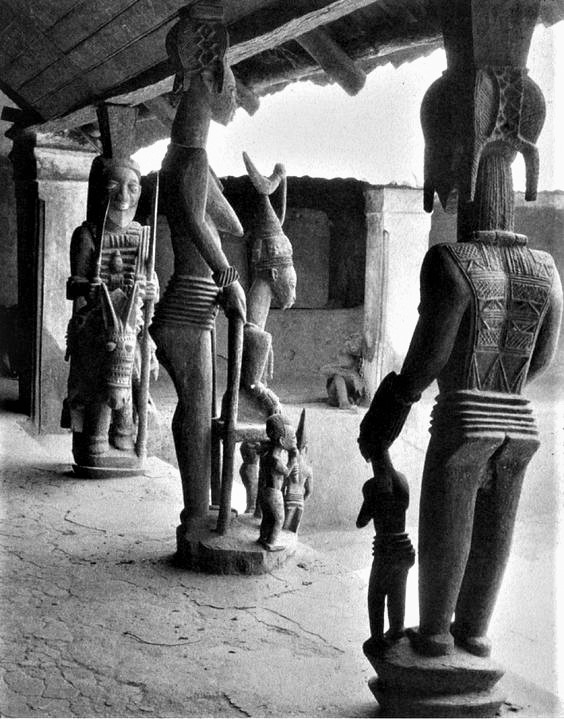
The sculptural tabeleau is centred in the paradoxical figure of the Olowe and his wife, in which the power associated with the monarch is not depicted in terms of an obvious evocation of power on his person, but through a combination of factors, visually powerfully but needing a grounding in Yoruba theologies of kingship to understand.
His wife standing behind him, towers over him,
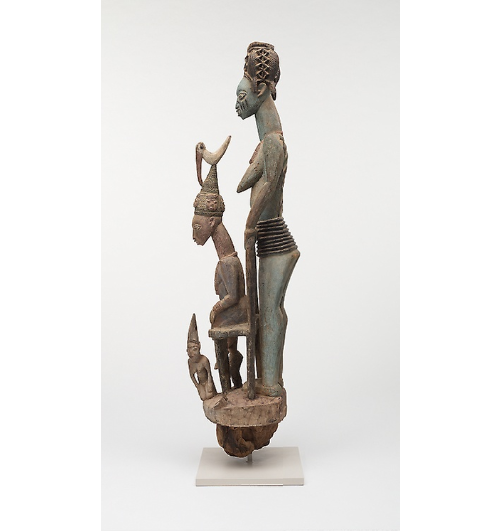
.png?part=0.6&view=1)
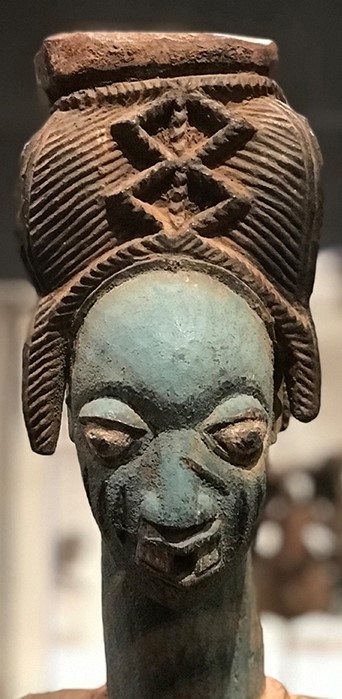
an imposing presence towering above the feminine features of the quietly seated Olowe, his crown, topped by an elegant bird, images suggesting beauty and grace rather than power,

paradoxes possibly evoking Yoruba ideas of royal power as grounded in feminine power, the latter's arcane potency symbolised by the bird, representative of the capacity for interdimensional motion associated with feminine power in its arcane form, evoked by the expression, Awon Iya Wa, which does not simply mean ''Our Mothers'' in the conventional sense of motherhood but creative and destructive potencies embodied by the feminine represented by particular female figures, human and non-human, terrestrial and pre-terrestrial.
Olowe's approach is clearly very different from the European use of human figures as pillars, caryatids and atlantes, the differences between both forms demonstrating the originality of the artists.
It is such originality that should be aspired to by such a cultural centre as the palace of the Oba of Benin.
Related demonstrations of originality could invove comparsions between Olowe's iconic palace doors, such as this one directly below centring an image which looks like an opon ifa, a divination board from the Yoruba origin Ifa system of knowledge, for exploring and shaping possiblities at the intersection of matter and spirit, the face of the embodiment of this intersection and guide to interpreting its symbolic languages, the deity Eshu, inscribed at its sides, as birds converge, their beaks touching, above the divinatory platform, possibly evoking ideas of motion between dimensions and possibilities, as pursued by Ifa
.jpg?part=0.11&view=1)
and other examples of Olowe's unique style
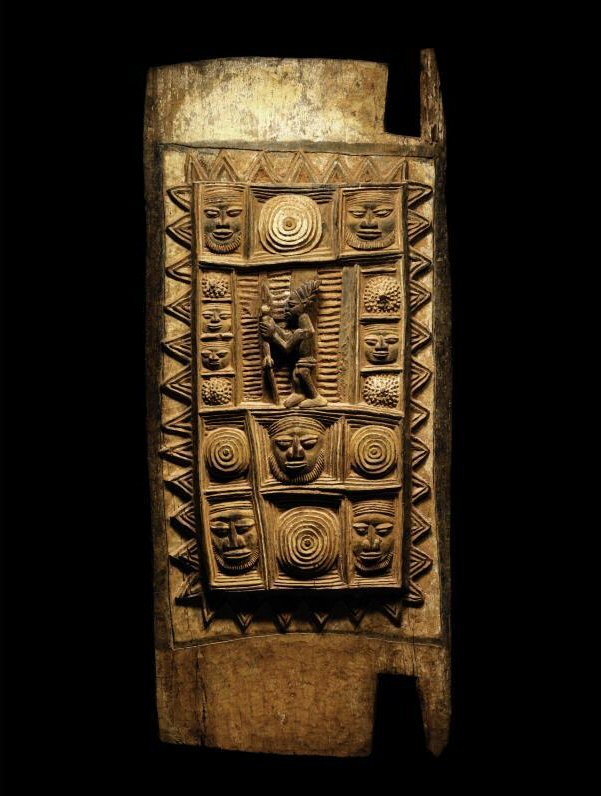
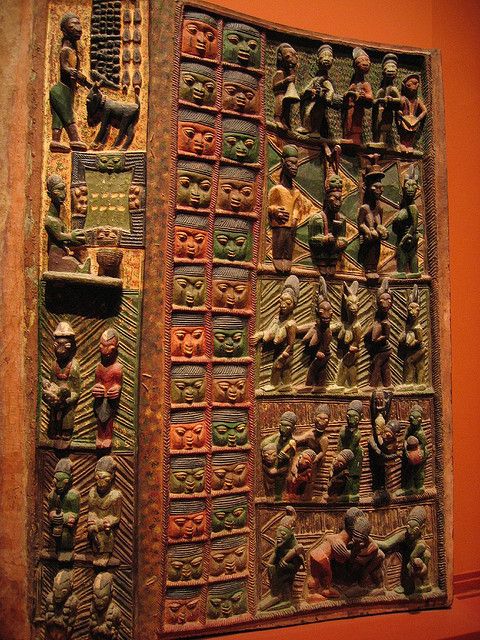
which may be compared, for example, with French sculpture Auguste Rodin's famous Gates of Hell, dramatising scenes of hell in the Divine Comedy of Italian writer Dante Alighieri, topped by a version of Rodin's signature work, the Thinker, a figure crouched in thought, reflecting on the vagaries of human life represented by the varied agonies of hell, each reflecting the character of the life of the person suffering a particular unique punlishment for their own brand of sinful life, as depicted by Dante
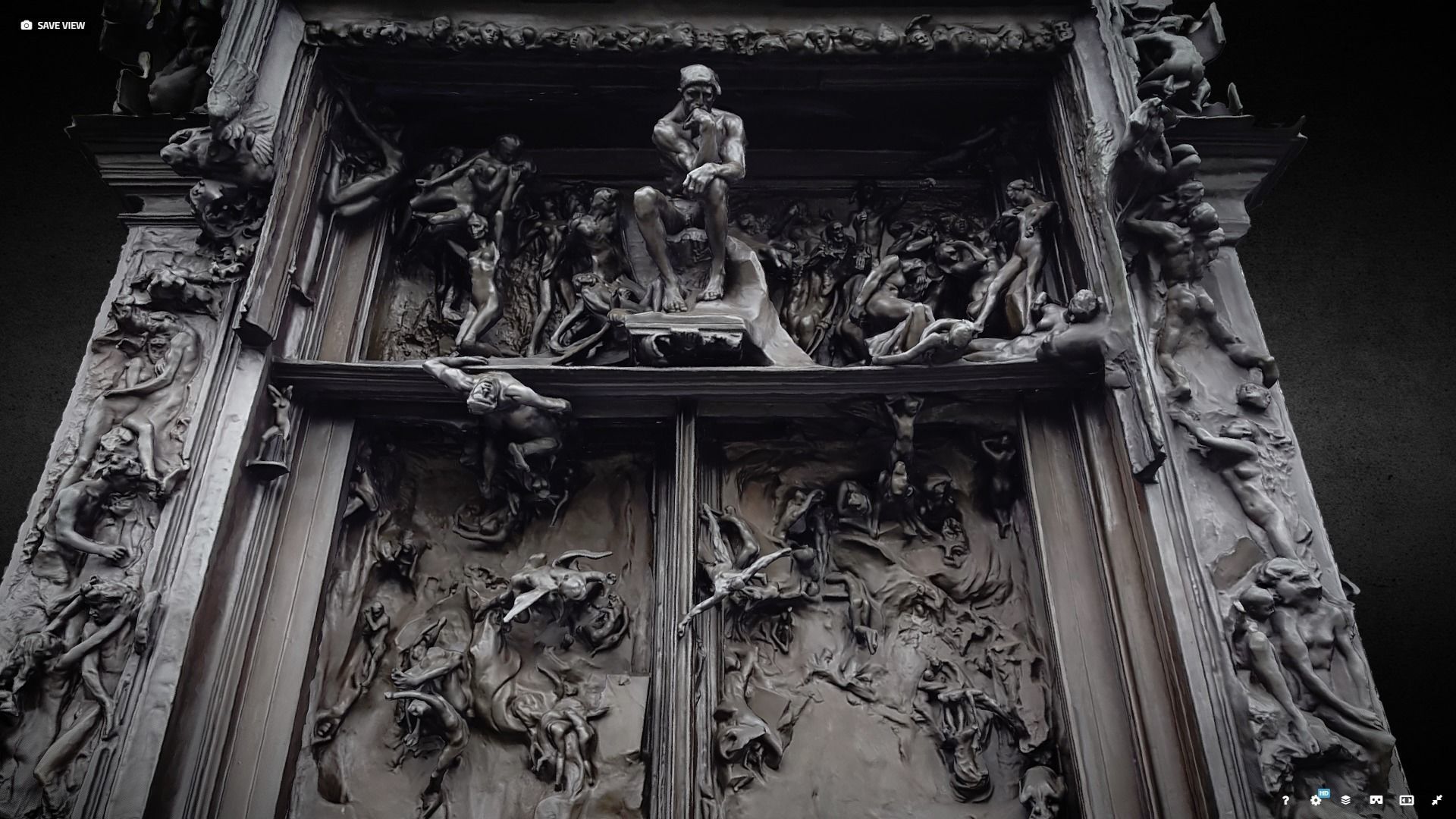
in his poem distilling Western culture from the ancient Greeks and Romans to the poem's time of composition in the medieval period, within a cosmological matrix unifying classical and Christian thought and arts, a continuity of tradition in innovative terms between the Greco-Roman and medieval Western civilisations, represented by Dante's poem and Rodin's 19th and 20th centuries in France that makes my point about the value of innovation in adapting cultural formations, particularly in relation to such a strategic cultural centre as the palace of the Oba of Benin.
thanks
toyin
--
Listserv moderated by Toyin Falola, University of Texas at Austin
To post to this group, send an email to USAAfric...@googlegroups.com
To subscribe to this group, send an email to USAAfricaDial...@googlegroups.com
Current archives at http://groups.google.com/group/USAAfricaDialogue
Early archives at http://www.utexas.edu/conferences/africa/ads/index.html
---
You received this message because you are subscribed to the Google Groups "USA Africa Dialogue Series" group.
To unsubscribe from this group and stop receiving emails from it, send an email to usaafricadialo...@googlegroups.com.
To view this discussion on the web visit https://groups.google.com/d/msgid/usaafricadialogue/14637164-b424-479f-8314-913b0320a9a2n%40googlegroups.com.
Oluwatoyin Adepoju
Even if the account of who made the gate were factual, which I doubt, that gate is powerfully emblazoned by a prime marker of UK identity, the UK's Royal Coat of Arms.
Even if the building I am referring to at the palace of the Oba of Benin were also visually defined in that way by the symbols of the Oba, it would not diminish the problems represented by the building.
%20ed.jpg?part=0.1&view=1)
I am not disturbed by the makeover of the gate leading to the Oba's palace, another new structural development at the palace, also marked by symbols of power, particularly since that gate has at its side a glorious ikhimwin, the tree used as a spiritual portal and boundary marker in Benin culture, in this instance enclosed within an ornate fence shaped by royal symbols of authority, even as the style of the gate may not in all instances derive from traditions of Benin metalworking.
Iyase-Odozi, whose work is inspired by Benin textiles, Peju Lawiyola, whose artistic pedigree is rooted in her mother's art as a daughter on an Oba, if I recall correctly, Charles Gore, author of a book on Benin shrines, Ndubuisi Ezeluomba, who has published on Benin mud art, Paula Ben Amos, who has published on various aspects of Benin art, Phylis Galembo, who has made superb pictures of priests and priestesses in Benin traditional religion, Norma Rosen, author of a wonderful article on Olokun symbolism, and more.
To view this discussion on the web visit https://groups.google.com/d/msgid/usaafricadialogue/CAP9m8jKgPzbq_Ba8oXO0s0zZ6wz8zOc5G%3D6st6is8Kos2ona4A%40mail.gmail.com.
Mr. E. B. Jaiyeoba
To view this discussion on the web visit https://groups.google.com/d/msgid/usaafricadialogue/CAGBtzfNp6xq7ww1UNwHoLv-MRbAXH%2BwF007MhLU5cuEBNMLaKg%40mail.gmail.com.
Cornelius Hamelberg
Oluwatoyin Vincent Adepoju,
Here are some glorious scared structures
Out of curiosity I checked out what the famous Benin City National Museum could possibly look like from the outside, and was surprised to see no pillars or colonnades looking like palm trees, elephant tusks, etc and that, just like the entrance to the Oba’s Palace, the museum's modest outer appearance whets curiosity about the treasures we are to find stored inside. In fact, to me, from the outside, the Benin City National Museum, faintly resembles the exteriors of the main Stockholm Public Library
Hopefully, you and I and all of us agree that The Oba of Benin’s Palace is not supposed to be a museum exhibiting current cultural artefacts along with some of the glories of the past , nor is the entrance to the palace with the colonnades and pillars that remind some people of ancient Greece and Rome ostensibly designed to conceal the cultural treasures that we are to suppose are to be found within the confines of the palace.
True , “ the apparel oft proclaims the man” - which does not mean that we should be deceived by exteriors and externals ( hence Jungle Negroes mock some Black British Policemen, who they suspect of being allied with an oppressive White Supremacist Power structure by referring to them contemptuously as “coconuts”, that is, brown outside and white inside…
Steel Pulse - Prediction
Michael Afolayan
Cornelius Hamelberg
You received this message because you are subscribed to a topic in the Google Groups "USA Africa Dialogue Series" group.
To unsubscribe from this topic, visit https://groups.google.com/d/topic/usaafricadialogue/4aqbtUQVXPk/unsubscribe.
To unsubscribe from this group and all its topics, send an email to usaafricadialo...@googlegroups.com.
To view this discussion on the web visit https://groups.google.com/d/msgid/usaafricadialogue/267c7239-641f-4fff-8f74-1585f247824an%40googlegroups.com.
Cornelius Hamelberg
Just another aside.
First of all, this good piece of news. His name is Frederick Akpoghene
Second of all, Costa Rica just beat Japan who beat Germany, four days ago…
Many thanks for the profound observations/diagnoses from Professors Babatunde Jaiyeoba and Michael O. Afolayan…
We are still dealing with the psychological and you may call it the post-colonial neuroses, if you will.
“What’s in a name?”, asked William Shakespeare or was it Wole Soyinka? As far as intellectualising about our malaise goes, some people sometimes go as far as starting off with our names, that essential or non-essential part of our identity, some names/ nomenclature even tell long histories, in some names we find ancestries, which deity is worshipped by the family, whole genealogies, even noble lineages, - as in the Bible, x who begat y and what happened all the way down the line. But take for example the name Mobutu Sese Seko Kuku Ngbendu Wa Za Banga, no argument, that’s a real African name for you and impressive too. Remember Malcolm X being asked in that interview, about the X , “ What is your real name?”
I say some people, such as Ayi Kwei Armah, who asks the pertinent or impertinent question - either in Fragments or Why are we so Blest? ( I can’t remember which one and I can’t remember the exact wording either ) “ What happens to the soul of an African child who grows up being called Mike”?”
The same kind of cultural imperialism that accompanied the US invasion of Iraq - one of the American soldiers asks his Iraqi colleague “ What’s your name?” - he’s informed “ My name is Abd al-Aziz “ - but this is too much for the American because all he hears is the last part of the name which sounds like ' asses'' so he says, “ I’ll call you Mike” and that’s it. The American’s dilemma is understandable too. Imagine if somebody's name translates to “ chicken anus” in your own language,how would you feel about having to address such a one on a daily basis?
The main point to be made here is that it would seem that globalisation goes with the territory known as Nigeria and Nigeria is in tune with globalisation, so Nigerian music has “ progressed” from Apala to Afrobeat and no one’s complaining about lack of electricity to support the microphone, the electric guitars,horns, drums, percussion , synthesisers
My Ghanaian friend was mad at the Swedish lass who travelled all the way to Ghana with her tourist camera and had only taken a few shots of monkeys climbing up trees. He was furious. “ What about our skyscrapers, why didn’t you take any pictures of those!?“, he yelled at her.
Here are a few videos put together by proud Africans who want to show that Africa has not been left behind when it comes to beautiful buildings, skyscrapers y’all : The Africa they don't show us on TV
Cornelius Hamelberg
The Palace of Emperor Haile Selassie
Presidential Palaces in Africa
Must admit that No 10 Downing Street looks more humble than The White House
BTW, I suppose that if the country could afford it, after winning the next election, the average African President would like to have an official residence like the White House, an official or private jet like the US President's official plane and a car like the one known as “the Beast”
Pillars from Ancient Greece or Rome, or mere colonial villas, we must admit that the Oba of Benin's Palace is not doing too badly , in terms of modesty and humility…
You received this message because you are subscribed to a topic in the Google Groups "USA Africa Dialogue Series" group.
To unsubscribe from this topic, visit https://groups.google.com/d/topic/usaafricadialogue/4aqbtUQVXPk/unsubscribe.
To unsubscribe from this group and all its topics, send an email to usaafricadialo...@googlegroups.com.
To view this discussion on the web visit https://groups.google.com/d/msgid/usaafricadialogue/4c6be6fa-5be4-4ba8-bee7-9ef63eeae1b6n%40googlegroups.com.
Oluwatoyin Adepoju
Benin culture, over the centuries, has achieved growth through creative eclecticism. This creativity involves reworking the new, the imported, in terms of a design orientation representing endogenous creativity.
In the light of such creative developments within Benin architecture, I am particularly puzzled about that cultural anomaly carried out in the palace of the Oba.
The issue is quite sensitive, on account of the discursive framework in terms of which the Oba and the palace exist in Benin culture.
I shall be sending the essays I have written on the subject on Facebook and here, along with links to the debates they have inspired, to the palace librarian, Honourable Benjamin Omuemu, who graciously took me round and if possible, send it to the Benin Traditional Council and the Oba.
Do I have any satisfactory answer to that?
To view this discussion on the web visit https://groups.google.com/d/msgid/usaafricadialogue/CADQbxpn%2B1DiXxzxngb4VgBjncS3JbQzye2XHnLOqvZeVXf8bOQ%40mail.gmail.com.
Oluwatoyin Adepoju
Oluwatoyin Adepoju
The puzzle about the palace of the Oba of Benin is that not only has Benin culture been synonymous with the preservation of positive cultural values, the Obaship institution preserves many of its timeless values, and many aspects of classical Benin civilization are tenaciously sustained within the rapacious development of Benin, as the city expands exponentially at various former boundaries, as places like Ekenwan and Ugbowo which one represented the outskirts of the city have become heavily built up, with ceaseless vehicular traffic indicating the level of human activity.
The Oba's palace also demonstrates strategic features of classical Benin culture, such as the sacred ikhinmwin tree at the entrance, which I will show in another post, ancient walls and various shrines, as are evident in a video I shall post later, along with the awesome grandeur and complex symbolism of the Oba's coronation rites, creative continuities that make that importation of unmodified neo-classical architecture as the central building of the Oba's palace even more puzzling.
I would describe classical Benin culture generally as still luminous, making me wonder about the puzzling issues in the remaking of the Oba's palace.
thanks
To view this discussion on the web visit https://groups.google.com/d/msgid/usaafricadialogue/668999487.4158024.1669540547073%40mail.yahoo.com.
Chika Okeke-Agulu
Harrow, Kenneth
kenneth harrow
professor emeritus
dept of english
michigan state university
Sent: Monday, November 28, 2022 2:58 PM
To: USA Africa Dialogue Series <usaafric...@googlegroups.com>
Subject: Re: USA Africa Dialogue Series - Re: Puzzling Makeover of Entrance Building to the Oba’s Chambers in the Palace of the Oba of Benin
jzarr...@gmail.com
Cornelius Hamelberg
Oluwatoyin Vincent Adepoju,
Interesting what I gather Professor Babatunde Jaiyeoba suggests, that the vetting of tenders and the awarding of contracts for construction projects could go a long way in obtaining the most desirable results..
It's a very similar kind of problem being faced in other parts of Africa. I actually lived directly opposite the Sierra Leone National Museum - a very modest building and a treasure trove - at the epi-centre of Freetown a few feet away from the Cotton Tree , the Law Courts, opposite which I.T.A. Wallace-Johnson used to hang out with Pa Ashwood and some of the other Creole Elders. By the time I was fifteen years old I was an expert on all the exhibits housed at that Museum, especially the mysterious Nomoli soap stone carvings, said to have been carved in utter darkness. About that period, Malcolm Seisay is my witness, because he and my four brothers and my Yoruba grandmother lived at 37 Westmoreland Street - directly opposite that museum etc whilst my mother and my Scottish stepfather were busy constructing bridges etc in the provinces. ( Malcolm’s dad George was one of Sierra Leone's finest gentlemen -a C.I.D. Superintendence who first brought Schaeffer dogs from Scotland Yard to Sierra Leone - by the time of the 1967 coup - he was the director of prisons - and - compassionately - issued blankets to his father-in-law Pa A.J. Demby who had been incarcerated by a slightly later coup by the so called “ National Liberation Council” under Andrew Juxon-Smith … which I think paradoxically appointed Malcolm’s uncle Tinga Sesiay as Counsel-General in New York - Tinga with his Swedish wife Gunilla and their baby son Joe stayed with my family in Freetown for a few months when they arrived from Sweden… and my brother Harold stayed with Tinga in New York in the early 1970s - just a little piece of history, the tip of the iceberg…as they say, still waters run deep, and there’s so much more important, even astounding stuff, as yet, left unsaid…a rule of thumb : don’t fear the one who is not afraid of you - but if he is afraid of you? Fear him!
In Sierra Leone, an Israeli firm ( can’t quite remember whether it was Dizengoff or Lorenzetti) built the Sierra Leone House of Parliament - true, we actually have a parliament in that country, as we struggle along with what’s being so eloquently being discussed in this forum : the fruits of democracy ( by their fruits shall ye know them…The State House , once the official residence of the Governor-General and now the residence of Sierra Leone’s president , is also a building that has an interesting history: many things happened therein…
Just in case you’re wondering why I always accord you your full titular respect and not just the chummy “ Toyin”, it’s because there is more than one Toyin around in this USA -Africa Dialogue Series and although “all men are equal “ in principle, but in practice, and not just in Heaven or in earthly dictatorships such as eulogised in Animal Farm, “some are more equal than others”.
Take Your Royal Highness, the Oba of Benin for example, even if you are on very familiar terms with him, as you could be with Prince Harry, do you address him by his first name? No. Of course not. In Old Persia ( “the shadow of God Himself walking on this planet earth” or in Ancient Egypt - he was on exhibition at the British Museum in August, you would have had to humbly please request to ask permission to first bow down and kiss the dust in front of his Pharaoh's feet, in the best interests of your very survival.
I’m not on such equal fraternal terms with the other one fondly called “ Toyin” by his contemporaries , not on such friendly & equal fraternal terms as to dare to have the impertinence of addressing the Ojogbon as if we are or were equals, on equal footing, despite the fact that I am older than him. Furthermore, both of us know that “ familiarity breeds contempt” - and of that I am well aware. As the Last Poets put it, You play a little too much with them, they say "Fuck you", flatter that puffed-up pompous semi-literate idiot just a little and you’ll hear him referring to you as “ vermin” - and not just behind your back mind you.
With reference to the Ojogbon, just imagine if I could say ( but not in jest) “ Despite the fact that I am older and wiser than him”. Or equally God Forbid, “ Older and Better” - than him !
You recall that in Shakespeare's Julius Caesar Act IV Scene III that was the cause of a heated quarrel between Brutus and Cassius
Worst case scenario , some years ago my Indian friend told me that he no longer sleeps with his wife. Why?, I asked him. “ Familiarity breeds contempt “ was his answer.
Having cleared that up, now to the matter at hand:
Taking into consideration the wisdom in necessity is the mother of invention, now that you mention it ( The Benin National Museum as a tourist attraction) one wonders to what extent it was a tourist attraction boosting the Edo State Treasury, before this awful deterioration in the security situation. This awful deterioration in the security situation also raises questions such as does Edo state have its own homegrown security outfit / self preservation - defence units or militias such as the Yoruba States’ AMOTEKUN ?
As Bob Marley wailed, “half the story has never been told” and we should appreciate hearing from you and others, the answers to the other question with reference to the looting of the Benin Bronze Treasures which presumably could never have happened but for a very sorry security situation in the kingdom, back then.
And what does that tell you Watson?
It’s a question I should ask my man Biko ( I don’t hesitate to address him by his first name because his other Brother ( same spirit) Steve Biko is not physically present here - so I ask him the question anyway : What about the looted Benin Bronzes ? I anticipate his answer because I know him so well. He’s going to say , repatriation of the bronzes to where they are from, and where they belong - and that will be followed by his favourite word : REPARATIONS. Concerning the latter, I have been wondering lately, has he been in touch with Hilary Beckles:?
Here he was, sounding off on BBC Hardtalk
Chika Okeke-Agulu
Harrow, Kenneth
Oluwatoyin Adepoju
Ken,In matters of expressive culture, I would not look to Fanon ("On National Culture"), or to Locke ("Legacy of the Ancestralof Arts") before him, for guidance. Both had a functionalist view of anti-colonial culture without an articulate view of its aesthetic, its expressive form. Both are necessary for the arts. On the Oba's palace, it is not just architecture that evokes colonialism (which is bad enough), it is one that effaces a people's heritage, histories, and traditions--which is all the sadder because Edo culture has a sophisticated architectural tradition that can fund new and culturally embedded royal architecture, especially for an institution that prides itself in upholding Edo culture in the present. The palace is a public building, a statement about the culture and kingdom of Benin. The American and British and French and German public buildings he noted keep a certain neo-classical aesthetic because it forcefully makes the argument about the continuity and dominance of the so-called western civilization that supposedly came from Greece, via Rome. Of course, Oba and his palace officials may decide to identify with this rhetoric of power. But it does not make it any less problematic, given what they claim to represent--as guardians of Edo culture, traditions, and history.
To view this discussion on the web visit https://groups.google.com/d/msgid/usaafricadialogue/94b1e81e-dfe2-4015-91e6-7c69ffe4d979n%40googlegroups.com.
Cornelius Hamelberg
Oluwatoyin Vincent Adepoju,
After considering all that you say in this your last post that I’m responding to, I guess that you are fast approaching the landscape/ garden architecture denouement as you have outlined in Landscape and the Sacred in Benin-City - an enthralling, consummate atmosphere of a magic, beauty, mystery, nature habitat, to replace the drab and the mundane , enough to match anything Amos Tutola could have imagined or written.
I wonder if there’s anything to be learned from the Renovation of Stockholm’s Modern Museum (shmile, an irrelevant or irreverent smile) merging tradition with the new look without having to go all the way back to the First Vikings or the Golden Age of the Swedish Empire, when Sweden was a Mighty Power in Europe, like Uncle Sam, kicking ass everywhere, Gustavus Adolphus and the 30 years war etc.
First of all, a Spanish architect Rafael Moneo designed the new look, Modern Museum in Stockholm.The architects that supervised/ did the overseeing of the restoration were Swedish)
Of course, there’s a world of difference from the nationalism perspective and the aesthetic outlook - and maybe, so there should be, between The Royal Palace , the National Museum and all the other museums and . e.g , one of Wole Soyinka’s favourites: The Drottningholm Palace Theatre…
Re - my last post, lots of mistakes and just for the record, I’ll correct two of them.I was hoping to smoke him out but he’s still in his corner, breathing hard, so I had better hasten to correct a few errors before Sir William Bangura starts to holler.
Andrew Juxon-Smith’s organisation was called “ National Reformation Council” ( NRC) and not “National Liberation Council”. I must have been thinking of Chairman Arafat and the PLO. I suppose that good churchman Juxon-Smith must have probably had Martin Luther’s ”Reformation'' in mind and not a much stronger idea such as LIBERATION - the liberation of his motherland ( from insanity). The current president ( Julius Maada Bio ) is a strong Roman Catholic and should therefore consider Luther anathema. If anything, Sierra Leone’s President Bio (stiff upper lip) is probably thinking / toying with the idea of the resurrection, the resurrection of Ancient Greece and Rome in the form of neo-classical architectural styles to add some finishing touches to the State House that he's occupying at the moment. In his spare time, when he is not busy waging war on the oppressed opposition, he probably dreams of kick-starting a Sierra Leone version of the Renaissance, thumbing through some of the classics of that period, possibly thinking of himself as a reincarnation of the Emperor Julius Caesar, although that would not be according to sound Catholic Doctrine. In the history of Sierra Leone so far, it took a daredevil like the late Foday Sankoh to introduce the concept of REVOLUTION into that nation’s public political vocabulary, by nicknaming his militia ” Revolutionary United Front. In the beginning he must have fancied himself as Sierra Leone’s Che Guevara sent by the either the Almighty or the devil to set the captives free, until he started alienating the peasants and rice farmers in the countryside with his “cut-han “, his hand & foot amputation policies. There’s our own Ibrahim Abdullah’s Bush Path to Destruction (1998) after eight years of that war, followed by Lansana Gberie’s A dirty war in West Africa ( 2005) three years after the war ended
It was probably Pa Shaki and not Andrew Juxon-Smith that appointed Tinga Seisay, Consul-General to the United States
This evening The Great Satan managed to beat Iran with a lone goal that was clearly offside.
Cameroon, Ghana , Morocco, Senegal, have done a great job.
Oluwatoyin Adepoju
To view this discussion on the web visit https://groups.google.com/d/msgid/usaafricadialogue/BL1PR12MB519193DB212F17F349940E36DA129%40BL1PR12MB5191.namprd12.prod.outlook.com.
Chika Okeke-Agulu
Harrow, Kenneth
kenneth harrow
professor emeritus
dept of english
michigan state university
Sent: Tuesday, November 29, 2022 5:03 PM
To: USAAfric...@googlegroups.com <USAAfric...@googlegroups.com>
Augustine Togonu-Bickersteth
Harrow, Kenneth
kenneth harrow
professor emeritus
dept of english
michigan state university
Sent: Wednesday, November 30, 2022 10:41 AM
To: usaafric...@googlegroups.com <usaafric...@googlegroups.com>
Subject: Re: USA Africa Dialogue Series - Re: Puzzling Makeover of Entrance Building to the Oba’s Chambers in the Palace of the Oba of Benin
Oluwatoyin Adepoju
To view this discussion on the web visit https://groups.google.com/d/msgid/usaafricadialogue/BL1PR12MB5191F887BA20040E1CD2D059DA159%40BL1PR12MB5191.namprd12.prod.outlook.com.
Cornelius Hamelberg
“yesterday's just a memory tomorrow is never what it's supposed to be”
Literary and philosophical matters should of course remain literary, philosophical , political, sociological spaces in which the intrusive “ I” or “i” does not enter. However, for example I was in Bakana during the 6th of August Presidential Elections in Nigeria and know exactly what happened there and of course can report about the general mood in the runup to that election, in the then Rivers State and Imo State, not as a foreign reporter working for Dagens Nyheter which reported that event with this bold, patronising blah blah blah headline: “ A Triumph for Democracy."
So, you see, being actually there makes quite a difference. Then you don’t have to interpret anything. You know. “Nobody can give you freedom. Nobody can give you equality or justice or anything. If you're a man, you take it.” Malcom X said that .
About the pillars supporting the edifice of the Oba’s Palace or the design and inscriptions on his personal coats of arms etc, should not be my prime concern in a country that is presumed to be a Republic. The dethroning / deposing of Sanusi Lamido Sanusi Former was bad enough , even if the powers that be in the Naija Republic have the authority to do what they did.
I’m sorry. Whenever I chip in with the anecdotal - mostly as an aside, it’s only nostalgia that everybody including me could do without. I could also chip in with what has so far not been written in any history book, whether by Falola or spy-catcher or anyone else - and that’s what’s so difficult about the task of writing a genuine memoir covering even that very short period 1965 - 1971 and the longer period 1972 to circa 1986, including 1981-1984 when I lived in Nigeria, and 1986 to circa,1996 , 1996 - circa 2003, if it’s the unalloyed and even ( of necessity) slightly fictionalised, unexpurgated truth that we’re after, where does the buck stop? Isn't it the same story with everybody? Wouldn’t it have been wonderful if the great men of history, such as the Prophet Moses, Jesus of Nazareth had penned their autobiographies to put all doubts to rest? As things are the only living testimonies available to us today are - for me a prime example, Nahjul Balagha
On a certain day at the Grand Hotel in Stockholm , when I was completely out of my mind - well I had first refused to shake hands with Jerome Holland the USA’s African- Ambassador to Sweden when I was introduced to him ( I told him to get the hell out of Vietnam ) and later on at lunch I had told Dr. Davidson Nicol to “ Tell the TRUTH” - I was being serious - but started slightly coming back to my senses when he asked me, “ Cornelius, how is your mother?” - at which point I left the table …. And that’s another story….
There are some stories you could tell, even shorti stories, and you find your body floating down the Thames, shortly thereafter. As Nixon said,
“He said nobody knows me
Nobody understands
These little people were good to me
Oh I'm gonna shake some hands” ( Line ‘em up)
Yesterday, I bought “ William Wilberforce - the Life of the Great Anti-Slave trade campaigner.” - by William Hague ( 557 pages )
My premier text on Nigerian history up to covering the Biafran Secession, remains “The Story of Nigeria” by Michael Crowder …
Sierra Leone was the first British Colony in Africa and for the longest period of time - 150 years. The UK left their imprints, a good functioning educational system, a good functioning and learned and independent judiciary, even a railway system, a round the clock 24 hrs electric current supply ( no sporadic,epileptic fits) and running water at least until 1961 when Sierra Leone became Independent.
The story of colonial Nigeria which only became a colony in 1914 - and for only 46 years) is so intimately linked with that of Colonial Freetown, Sierra Leone which was the administrative headquarters of British colonial West Africa …
“back to those early days when the study of african literature was in its infancy” you’d get insightful insight and summary from the first few issues of African Literature Today Edited by Eldred Jones. About the Anglophonic penchant for interpreting some of what was going on through the lens of Jung & Freud, F.R. Leavis and Arnold Kettle - and for poetry Gerlad Moore check Imeh Ikkideh’s review of Dathorne’s review in Volume 4 of the aforementioned journal….
When Wole Soyinka was arrested, Professor Eldred Jones spearheaded the protest demonstrations, collection of signatures and other actions for his release : there were almost equal numbers of Igbo and Yoruba students on the FBC campus at the time and for collaboration about this you could ask Kenneth Ofodile… I was at Legon in Ghana, when the Nigerian Civil War ended
Harrow, Kenneth
kenneth harrow
professor emeritus
dept of english
michigan state university
Sent: Thursday, December 1, 2022 8:01 AM
To: USA Africa Dialogue Series <usaafric...@googlegroups.com>
Cornelius Hamelberg
And when that world impinges on other worlds, ay, there's the rub
Less than complete honesty - as in this case - would be incomplete and would not be personally satisfying.
So, advise me please : what should be left out ?
And in the genre of the confessional ( we’ve got to leave the good Catholics out of this, since after their confessions and a few Hail Marys, they too believe just like every not so pious Jew after Yom Kippur, that their slates are wiped clean like the bottoms of new born babies, wiped clean of transgression, maybe transgender too, and sin) in the world of libel and slander, and other types of immorality, how judiciously does one navigate those awful , embarrassing, remorseful episodes, in retrospect, writing in retrospect, when we are all so much wiser, without distorting what was the immediate - and that immediate effect still reverberating and splashing around till today`?
I presume that Jesus would have commenced penning his autobiography for posterity sometime after his resurrection, in defiance of his weak apology, “blessed are they that have not seen, and yet have believed”...
"Beauty is truth, truth beauty,—that is all
Ye know on earth, and all ye need to know." ( Keats)
For authenticity, we also have Sahifa Sajjadiya ( The Psalms of Islam )
BTW, I’d send Ken first drafts, weekly, if he had the stomach for it and if there is a secure way of doing so ( right now I believe there’s an evil jinni in my computer)
https://www.youtube.com/@flamencoguitarsale/videos
Oluwatoyin Adepoju
To view this discussion on the web visit https://groups.google.com/d/msgid/usaafricadialogue/b11e9bed-2f12-4389-b803-d5dabb8f6fbbn%40googlegroups.com.
Harrow, Kenneth
kenneth harrow
professor emeritus
dept of english
michigan state university
Cornelius Hamelberg
Oluwatoyin Adepoju
To view this discussion on the web visit https://groups.google.com/d/msgid/usaafricadialogue/BL1PR12MB5191AECDBFC1A128B57CEF21DA159%40BL1PR12MB5191.namprd12.prod.outlook.com.
Harrow, Kenneth
kenneth harrow
professor emeritus
dept of english
michigan state university
Oluwatoyin Adepoju
Biko Agozino
|
Emeagwali, Gloria (History)
History Department, Central Connecticut State University
www.africahistory.net
Sent: Friday, December 2, 2022 12:32 PM
To: usaafric...@googlegroups.com <usaafric...@googlegroups.com>
Subject: [WARNING: Suspected Phishing] Re: USA Africa Dialogue Series - Re: Puzzling Makeover of Entrance Building to the Oba’s Chambers in the Palace of the Oba of Benin
EXTERNAL EMAIL: This email originated from outside of the organization. Do not click any links or open any attachments unless you trust the sender and know the content is safe.
Chika Okeke-Agulu
Emeagwali, Gloria (History)
Toyin Falola
This is a wonderful trend.
Chika, can I commission you to do a textbook on this?
TF
The New Front Part of the Central Building of the Palace of the Oba of Benin
from
Alltimepost.com
Benin never had an automobile industry, so one cannot argue for innovation in such an industry, but Benin has an ancient artistic and architectural tradition, one of the greatest in the world. Should the creativity suggested by that achievement not be reflected in the central building of the Oba's palace, the spatial and symbolic centre of Benin culture?
Should the structure be rebuilt? I think so.
Why?
A cultural centre of the level of significance of the palace of the Oba of Benin needs to be constructed in terms of the most enduring values, propjecting the union of the past, the present and the timeless, as demonstrated by the unique insights developed in relation to the culture's creative traditions.University College, London, for example, has a similar but even more impressive design than the building now constituting the Oba's chambers.
The relevance of that design to UCL, however, is clear, being a Western university with its roots in the headwaters of the Western cognitive tradition in ancient Greece, where that style achieves a particularly iconic representation in the Parthenon.
Jakub Pala's picture of the Parthenon, ''a former temple on the Athenian Acropolis, Greece, that was dedicated to the goddess Athena during the fifth century BC. Its decorative sculptures are considered some of the high points of Greek art, an enduring symbol of Ancient Greece, democracy and Western civilization.(Wikipedia)
What is the direct relationship of such cultural linlks to the palace of the Oba of Benin, the symbolic centre of a civilisation with its own cognitive, artistic and architectural history?
As an example of the innovative use of the idea of pillars in African architecture, pillars demonstrating royal grandeur within high creativity, one may see the famous verandah posts of Olowe of Ise for the palace of the Ogoga of Ikere, in which human figures hold up the roof, the stylization of these figures and the spatial relationships between them greating a sense of silent majesty.
The sculptural tabeleau is centred in the paradoxical figure of the Olowe and his wife, in which the power associated with the monarch is not depicted in terms of an obvious evocation of power on his person, but through a combination of factors, visually powerfully but needing a grounding in Yoruba theologies of kingship to understand.
His wife standing behind him, towers over him,
her face powerful in its bulbous stare, topped by a crown with a zig zag design akin to a flash of lightning
an imposing presence towering above the feminine features of the quietly seated Olowe, his crown, topped by an elegant bird, images suggesting beauty and grace rather than power,
paradoxes possibly evoking Yoruba ideas of royal power as grounded in feminine power, the latter's arcane potency symbolised by the bird, representative of the capacity for interdimensional motion associated with feminine power in its arcane form, evoked by the expression, Awon Iya Wa, which does not simply mean ''Our Mothers'' in the conventional sense of motherhood but creative and destructive potencies embodied by the feminine represented by particular female figures, human and non-human, terrestrial and pre-terrestrial.
Olowe's approach is clearly very different from the European use of human figures as pillars, caryatids and atlantes, the differences between both forms demonstrating the originality of the artists.
It is such originality that should be aspired to by such a cultural centre as the palace of the Oba of Benin.
Related demonstrations of originality could invove comparsions between Olowe's iconic palace doors, such as this one directly below centring an image which looks like an opon ifa, a divination board from the Yoruba origin Ifa system of knowledge, for exploring and shaping possiblities at the intersection of matter and spirit, the face of the embodiment of this intersection and guide to interpreting its symbolic languages, the deity Eshu, inscribed at its sides, as birds converge, their beaks touching, above the divinatory platform, possibly evoking ideas of motion between dimensions and possibilities, as pursued by Ifa
and other examples of Olowe's unique style
which may be compared, for example, with French sculpture Auguste Rodin's famous Gates of Hell, dramatising scenes of hell in the Divine Comedy of Italian writer Dante Alighieri, topped by a version of Rodin's signature work, the Thinker, a figure crouched in thought, reflecting on the vagaries of human life represented by the varied agonies of hell, each reflecting the character of the life of the person suffering a particular unique punlishment for their own brand of sinful life, as depicted by Dante
To view this discussion on the web visit https://groups.google.com/d/msgid/usaafricadialogue/c1b622e5-237a-49be-b897-aee3817e6efcn%40googlegroups.com.
biko...@yahoo.com
To view this discussion on the web visit https://groups.google.com/d/msgid/usaafricadialogue/BL0PR01MB4514D518DB270A108C462791DE169%40BL0PR01MB4514.prod.exchangelabs.com.

%20ed.jpg?part=0.9&view=1)
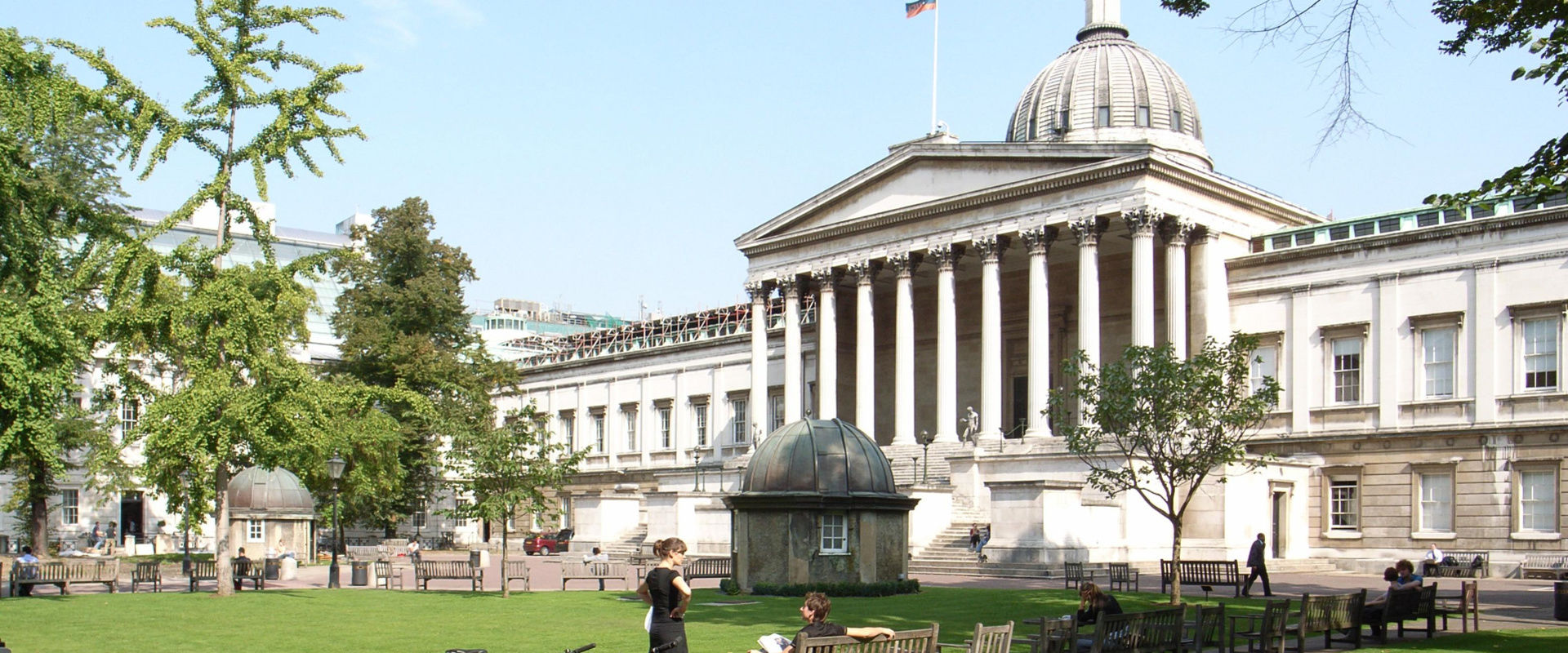

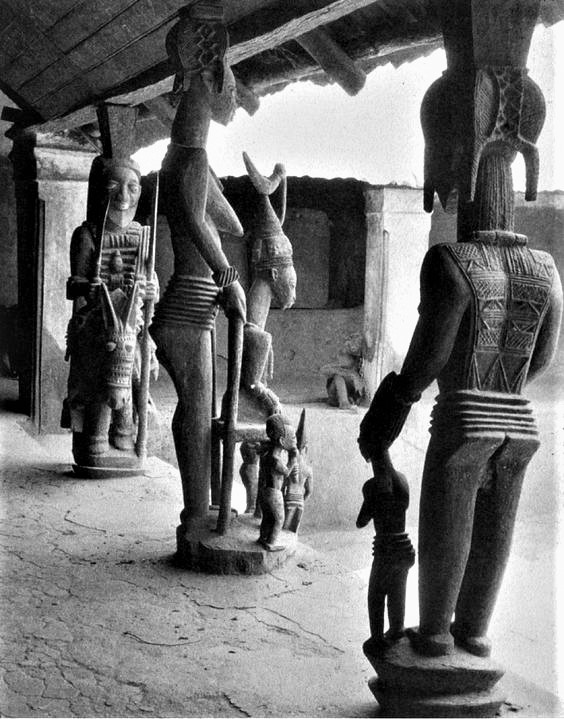
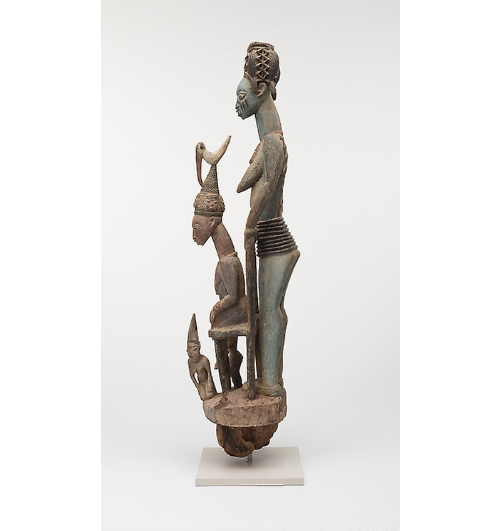
.png?part=0.4&view=1)
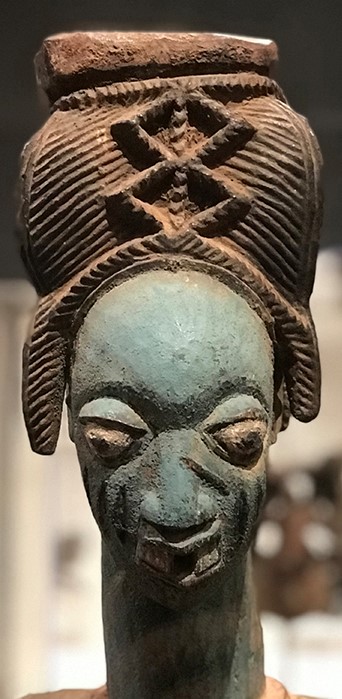
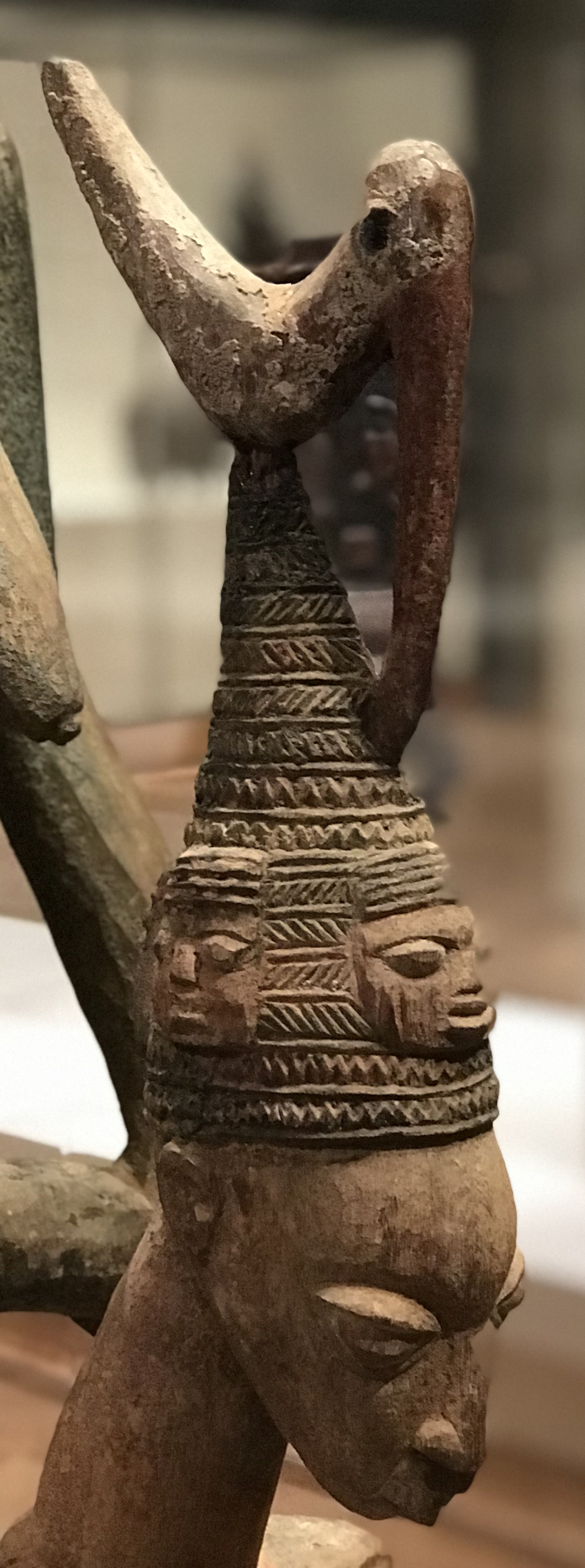
.jpg?part=0.12&view=1)


